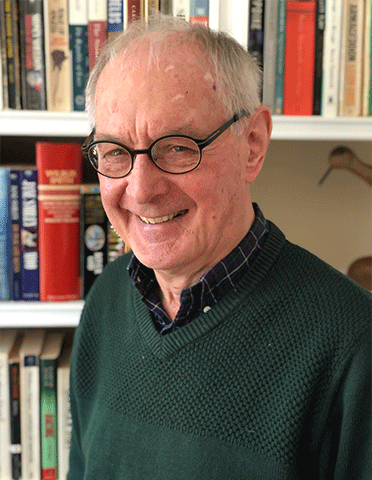
Ted M. Semienchuk
I spent most of my business career in the Computer Information Technology area. However, art has always been a very important part of my life – my father was a violinist and my mother was a dress designer. Drawing, painting, sculpting was something I did in my spare time – my hobby.
It was a computer application, however, in the form of Computer Aided Design wire drawings that caught my creative interest. My original idea was to create a sculpture in two dimensions in steel wire, in which the viewer would see a three-dimensional image. I experimented unsuccessfully with different steel screening and metal wire welding until I discovered the wire mesh used in the manufacture of fireplace screens. When people first see my work, they assume that the pieces are made in a mold and the wire mesh is somehow squeezed into shape in a steel press. In fact, each piece is hand-made and the tools I use are my fingers and hands pushing and pulling the material.
I do not work from models. Each piece evolves from some inner vision or image I have of the human figure. The movement of a ballet dancer. The arch in the back of a figure skater. The focus of my work is the human figure. I try to express or capture the memory of a twist or turn, of a chance expression of the face or body. My hope is that the viewer of my work will be struck by the beauty of the human body and moved by its expressive power.
The wire medium also imposes a certain movement with each piece evolving and changing direction dramatically from my original concept. As the material is pushed in one direction, it will simultaneously pull material, and the piece, in another direction. The material is both solid – you view and see the primary shape – and transparent – as you see through the piece, the material in the background adds to the line and shape of the figure in the foreground, hopefully enhancing the expression in the piece. In addition, the sculptures use light and shadow to play on the mesh to sculpt the figure in three dimensions – the shadow cast on the background in turn draws the figure in two dimensions.